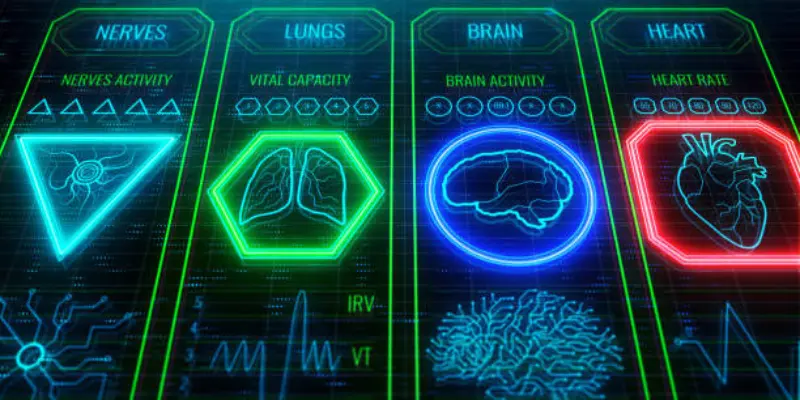Real Life Examples of AI in Medical Imaging
Published: 24 May 2025
Long waits for test results. Missed diagnoses. Overloaded doctors. These problems affect millions of patients every year. But AI is stepping in to help. Artificial Intelligence in medical imaging is changing how doctors care for patients. It helps them to find problems faster, make better decisions and even save lives.
It sounds strange, right? But it’s already happening. With AI stepping into hospitals, many wonder what this means. Let’s explore real life examples of AI in medical imaging to understand how it actually works and where it works best.

What Is AI in Medical Imaging?
Medical imaging means using pictures like X-rays, MRIs or CT scans to look inside the body. Doctors use these images to find problems like broken bones, infections or even tumors.
Now, here’s where AI comes in.
AI is like a smart helper. It looks at those medical images and spots things that may be hard to see with the human eye. It learns from thousands of examples, so it knows what to look for.
Why Is This Important?
Doctors work hard. But they are also human. They can get tired or miss tiny details in images. AI helps them by:
- Double checking images
- Spotting signs of disease early
- Giving faster results to patients
Think of AI like a second set of expert eyes. It does not replace doctors, rather it works with them.
Real Life Examples of AI in Medical Imaging
AI is not just a cool idea—it’s already at work in real hospitals around the world. From early diagnoses to helping doctors act fast during emergencies, AI is making a big impact. In this section, we will look at simple, real-life stories of how AI tools help doctors and patients every day.
A). AI Detecting Lung Diseases from Chest X-rays
Chest X-rays are one of the most common tests in hospitals. They help doctors see problems in the lungs like pneumonia, tuberculosis (TB) or even COVID-19. But reading these X-rays takes time and mistakes can happen.
Now, AI is helping doctors read chest X-rays faster and better.

Real-Life Example: Google Health’s AI Tool
Google created an AI tool that looks at chest X-rays and finds signs of lung disease. In tests, this AI spotted problems just as well as top doctors and sometimes even faster.
How It Helps
- Saves time: The AI scans the image in seconds.
- Catches early signs: It finds small problems that doctors might miss.
- Supports rural care: In places with few doctors, AI helps the patients to get results quickly.
Where It’s Used
Hospitals in India and parts of Africa use AI tools to check chest X-rays. In these places, doctors may be few but AI gives them extra support.
B). Breast Cancer Detection with AI
Breast cancer is one of the most common cancers in women. Finding it early can save lives. That’s why doctors use mammograms, special X-rays of the breast, to look for signs of cancer. But reading these images is not always easy.
AI is now helping doctors to find breast cancer sooner and with more accuracy.
Real-Life Example: Lunit INSIGHT MMG and iCAD
AI tools like Lunit INSIGHT MMG and iCAD scan mammograms and highlight areas that may show early signs of cancer. These tools help doctors catch tiny changes they might miss with the human eye.
How It Helps
- Spots cancer earlier: AI finds warning signs before symptoms appear.
- Reduces missed cases: It adds an extra layer of checking.
- Supports busy clinics: It helps doctors review images faster.
Where It’s Used
Hospitals and breast cancer clinics in the U.S., Europe and South Korea use AI tools alongside radiologists. They trust AI to give them a second opinion and help women get quicker answers.
C). Brain Tumor Segmentation in MRI
Brain tumors can be hard to see, even with powerful MRI scans. Doctors must carefully look at the images to find the tumor and understand its size and shape. This process takes time and even a small mistake can affect treatment.
AI is now helping doctors by making this step faster and more precise.
Real-Life Example: AI in Top Hospitals Like Mayo Clinic
Hospitals like Mayo Clinic use AI tools that scan brain MRIs and outline the tumor area clearly. This is called tumor segmentation and AI does it in seconds.
How It Helps
- Faster planning: Doctors get a clear view of the tumor quickly.
- More accuracy: AI draws sharp and detailed edges around the tumor.
- Better surgery prep: Surgeons know exactly where to focus.
Where It’s Used
AI tools for brain tumor imaging are being used in advanced hospitals and research centers. They help doctors decide on surgery, radiation or other treatments with confidence.
D). Diabetic Retinopathy Detection from Eye Scans
Diabetes can damage the eyes and cause vision loss if not caught early. Doctors use special eye scans to check for diabetic retinopathy, a disease that harms blood vessels in the eye.
AI helps by quickly finding signs of this damage before patients notice any problems.

Real-Life Example: Google’s DeepMind and IDx-DR System
Tools like Google’s DeepMind and the IDx-DR system analyze eye scans to spot early diabetic retinopathy. These AI systems alert doctors if they see damage that needs treatment.
How It Helps
- Early warning: AI spots damage before vision worsens.
- Works in remote areas: AI can analyze scans in places without eye specialists.
- Saves vision: Early treatment prevents blindness.
Where It’s Used
These AI tools are used in eye clinics and mobile health units worldwide. They make eye care easier to access, especially for people with diabetes living far from hospitals.
E). AI in Stroke Detection
A stroke can happen suddenly and every minute counts. Doctors need to act fast to save a patient’s brain and life. But spotting a stroke quickly from brain scans is not always easy.
AI is helping doctors find strokes faster and alert the medical team right away.
Real-Life Example: Viz.ai and RapidAI
AI tools like Viz.ai and RapidAI analyze brain scans to detect signs of a stroke. They send instant alerts to doctors which speed up their treatment decisions.
How It Helps
- Saves precious time: AI spots stroke signs in seconds.
- Speeds up care: Faster treatment means better recovery.
- Supports busy hospitals: AI helps doctors prioritize urgent cases.
Where It’s Used
Emergency departments in many U.S. hospitals use these AI tools. They help doctors act quickly when every second matters.
F). AI in CT Scans
CT scans help doctors look inside the body. But finding tiny signs of disease takes time and skill. Doctors must study each image closely. A small miss can result in delay.
AI is helping doctors by making this step faster and more accurate.
Real-Life Example: AI in Top Hospitals Like Mayo Clinic
Hospitals like Mayo Clinic use AI tools that scan CT images and highlight problem areas. The AI checks for signs of issues like lung cancer or blood clots. It does this in just seconds.
How It Helps
- Faster diagnosis: Doctors find problems quickly.
- More accuracy: AI highlights small details that are easy to miss.
- Better care decisions: Doctors choose treatments with more confidence.
Where It’s Used
AI tools for CT imaging are used in top hospitals and research centers. They help in emergency care, cancer screening, and many other areas—making care faster and safer.
How Hospitals Use AI Tools
AI tools do not work alone, they team up with doctors and nurses in hospitals every day. Here’s how AI fits into the normal hospital routine:
- The patient gets a medical scan—like an X-ray, MRI or CT scan.
- AI analyzes the scan quickly, looking for signs of disease or problems.
- Doctors review the AI’s findings to make decisions faster and more accurately.
- Doctors discuss results with patients and plan the best treatment.
Think of AI like a helpful assistant who never gets tired and can spot tiny details faster than anyone else. It’s like having a second pair of expert eyes.
This teamwork helps hospitals give patients quicker diagnoses and better care.
Benefits of Using AI in Medical Imaging
AI is changing medical imaging in many good ways. Here are the top benefits:
- Faster Results
AI can analyze images in seconds. Patients don’t have to wait long for answers. - More Accurate Diagnoses
AI helps in catching the problems that doctors might miss. This means fewer mistakes. - Less Work for Doctors
Doctors get help in reviewing images. They can focus more on patient care. - Better Patient Care
With faster and clearer results, doctors can start treatment sooner. This improves recovery chances.
Conclusion
AI is already making a big difference in medical imaging. From finding lung diseases to spotting strokes, discussed real life examples show how AI helps doctors to work faster and smarter. This means better care and healthier lives for patients everywhere.
If you want to stay informed and see how this AI technology is changing healthcare, keep exploring Medical Imaging Examples in the Real World. The future is bright and learning more today can help you be part of tomorrow’s medical breakthroughs.
AI in Medical Imaging – Frequently Asked Questions
Here is the list of FAQs:
Most patients don’t pay extra for AI analysis since it’s built into the hospital’s existing imaging services. The cost is typically covered by insurance just like regular X-rays or MRIs. However, some specialized AI screening programs might have different pricing, so it’s best to check with your healthcare provider.
Yes, AI can make mistakes just like humans can. That’s why doctors always review AI findings before making final decisions about patient care. AI is designed to work alongside doctors and not replace their judgment and expertise.
Medical AI systems follow the same strict privacy rules as all healthcare technology. Your scans are protected by HIPAA laws and hospital security systems. The AI only analyzes the medical images without storing your personal information.
Most medical AI systems take months to years to train properly. They learn from millions of medical images and require extensive testing before hospitals can use them. The training process involves medical experts who teach the AI what to look for in different conditions.
The doctor’s judgment always comes first in medical decisions. If there’s a disagreement, doctors will often order additional tests or get a second opinion from another specialist. AI serves as a helpful tool but doctors make the final treatment decisions.
There are no direct health risks from having AI analyze your medical images. The AI only looks at scans that are already taken for medical reasons. The main concern is ensuring the AI doesn’t miss important findings which is why doctors always review the results.
Yes, you can discuss this with your doctor, though it may limit the speed and accuracy of your diagnosis. Most hospitals will respect patient preferences about their care. However, many patients find that AI actually improves their care by helping doctors catch problems earlier.
You can ask your doctor or the radiology department directly about their AI tools. Many hospitals are proud of their AI capabilities and will explain how it improves the patient care. Some hospitals also mention AI services on their websites or patient information materials.
No, AI is designed to assist doctors, not replace them. Radiologists are still needed to interpret complex cases, make treatment recommendations and communicate with patients. AI handles routine tasks so doctors can focus on more complex medical decisions and patient interaction.
AI can sometimes spot early signs of disease that are too small or subtle for human eyes to notice consistently. However, doctors are still better at understanding complex cases and considering a patient’s full medical history. The combination of AI and human expertise provides the most accurate results.





